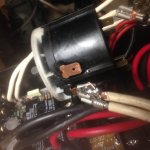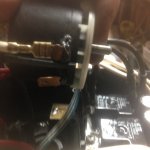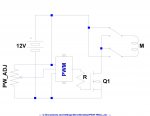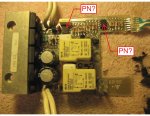Long story short, I have one I took apart, found the board was bad, and two years later someone is kind enough to rebuild the board.
I've scrounged the parts, but have no idea how to wire the switch. I found this thread but the pic isn't very clear, and a lot of the wires are already off.
http://forum.tinboats.net/viewtopic.php?f=5&t=5453
Anyone have one of these? Only 4 screws holding the top cover on. Would be very appreciative if someone would check a motor and give some instruction on what goes where.
I've scrounged the parts, but have no idea how to wire the switch. I found this thread but the pic isn't very clear, and a lot of the wires are already off.
http://forum.tinboats.net/viewtopic.php?f=5&t=5453
Anyone have one of these? Only 4 screws holding the top cover on. Would be very appreciative if someone would check a motor and give some instruction on what goes where.

























